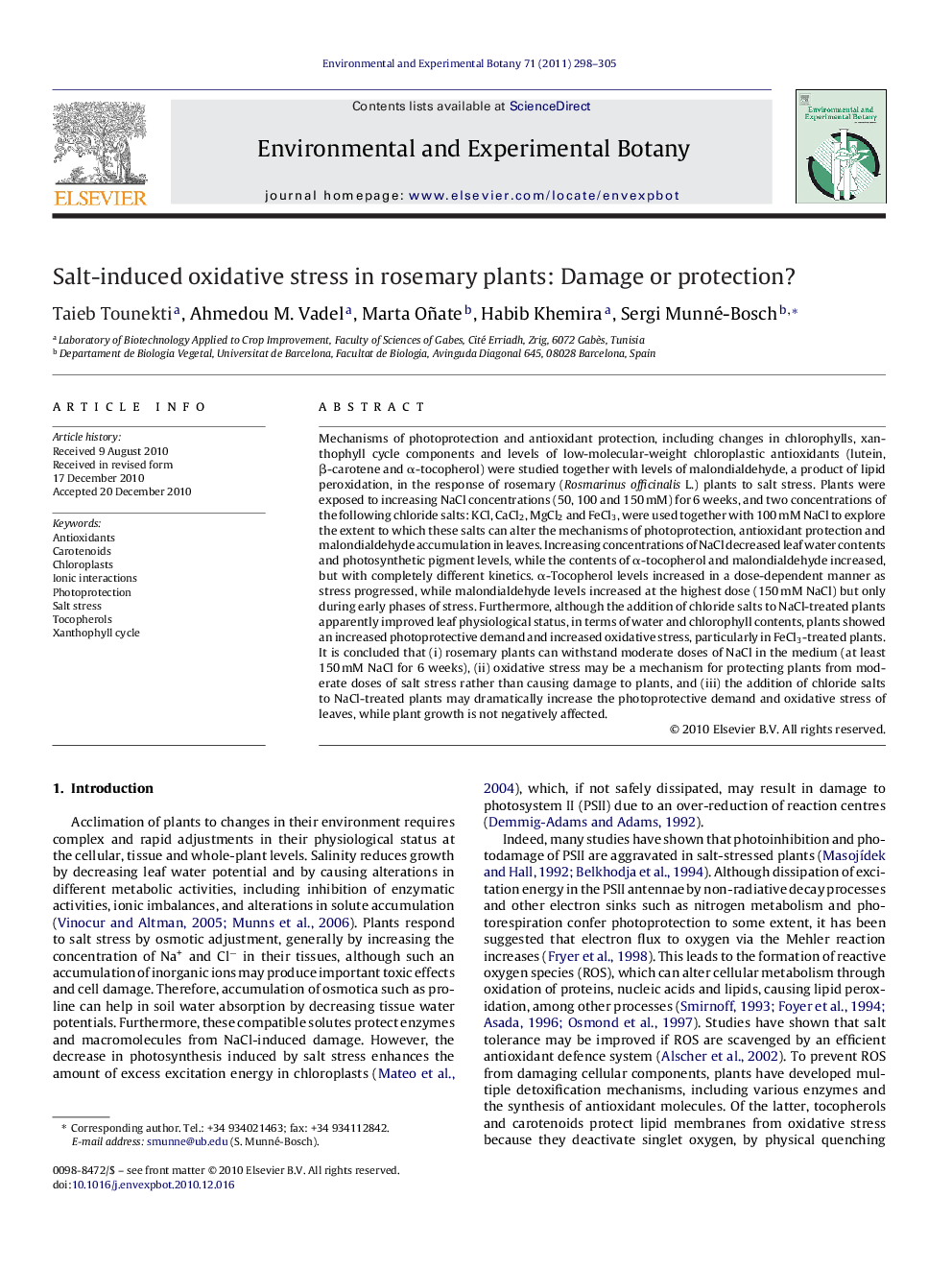| کد مقاله | کد نشریه | سال انتشار | مقاله انگلیسی | نسخه تمام متن |
|---|---|---|---|---|
| 6389077 | 1329229 | 2011 | 8 صفحه PDF | دانلود رایگان |

Mechanisms of photoprotection and antioxidant protection, including changes in chlorophylls, xanthophyll cycle components and levels of low-molecular-weight chloroplastic antioxidants (lutein, β-carotene and α-tocopherol) were studied together with levels of malondialdehyde, a product of lipid peroxidation, in the response of rosemary (Rosmarinus officinalis L.) plants to salt stress. Plants were exposed to increasing NaCl concentrations (50, 100 and 150 mM) for 6 weeks, and two concentrations of the following chloride salts: KCl, CaCl2, MgCl2 and FeCl3, were used together with 100 mM NaCl to explore the extent to which these salts can alter the mechanisms of photoprotection, antioxidant protection and malondialdehyde accumulation in leaves. Increasing concentrations of NaCl decreased leaf water contents and photosynthetic pigment levels, while the contents of α-tocopherol and malondialdehyde increased, but with completely different kinetics. α-Tocopherol levels increased in a dose-dependent manner as stress progressed, while malondialdehyde levels increased at the highest dose (150 mM NaCl) but only during early phases of stress. Furthermore, although the addition of chloride salts to NaCl-treated plants apparently improved leaf physiological status, in terms of water and chlorophyll contents, plants showed an increased photoprotective demand and increased oxidative stress, particularly in FeCl3-treated plants. It is concluded that (i) rosemary plants can withstand moderate doses of NaCl in the medium (at least 150 mM NaCl for 6 weeks), (ii) oxidative stress may be a mechanism for protecting plants from moderate doses of salt stress rather than causing damage to plants, and (iii) the addition of chloride salts to NaCl-treated plants may dramatically increase the photoprotective demand and oxidative stress of leaves, while plant growth is not negatively affected.
Research highlightsⶠRosemary plants can withstand moderate doses of salt stress. ⶠOxidative stress may be a mechanism to protect plants from moderate doses of salt stress rather than cause damage to rosemary plants. ⶠThe addition of chloride salts to NaCl-treated rosemary plants may dramatically increase the photoprotective demand and oxidative stress of leaves, while plant growth is not negatively affected.
Journal: Environmental and Experimental Botany - Volume 71, Issue 2, June 2011, Pages 298-305